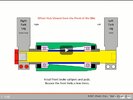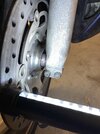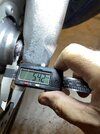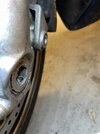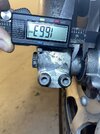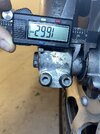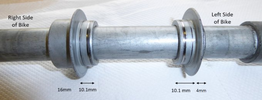It is to make sure that everything is settled into its proper position
The axle which is clamped to the right fork leg, can be twisted slightly in relation to the left hand fork leg, or the fork legs can be strained slightly - think of the fork leg as a separate component and it is secured to a fixed axle by its pinch bolts. the fork leg is in an upright position, not attached to anything else. The axle is held firmly . It cannot move. Now imagine pushing on the top of the fork leg - trying to move it like a clock hand from the 12 oclock position. You will have some success. Some reasons:
The axle will twist slightly. Yes, metal bars will twist. Think torsion bar suspension, beam type torque wrenches
The moving parts will exhibit some 'play'
The fork leg and tube will bend slightly.
Fork legs were not facing quite the same way - one is pressing on the back of the axle, the other on the front.
Fork legs were not quite level - one pressing on the top of the axle one on the bottom
Those tiny misalignments could be locked in place by friction and the weight of the motorcycle.
As soon as you clamp the left fork leg, the tiny misalignments are locked in place - so before you do that, you bounce the forks a few times to help the components to settle into a more relaxed position. To overcome the friction and take the weight off the front wheel momentarily.
Have you ever seen a motorcyle after a drop. Forks and wheel seem to be twisted, but sometimes they are not damaged. The forks have twisted in their tubes, the axle has rotated on one side, and one fork has compressed more than the other. And the tubes have twisted in the yoke. All that needs to be done is for everything to be undone, rearranged and tightened up again
You must have got on mechanical weighing scales, looked down and thought - thats not right. So you get off and try again. Or you put a foot in the scales and take it off quickly to make sure that the mechanism is free to move. Then you try again and all is well with the world. It shows the correct reading.
What you are doing with the scales is exactly what you do when bouncing the forks. Freeing things up making sure that they are moving properly, before applying the final securing bolts to lock the settings into position.
Now if only weighing scales had such a locking device ...

